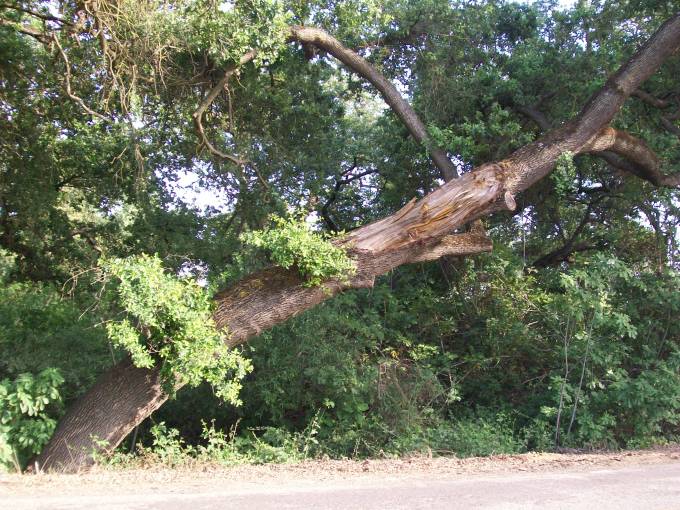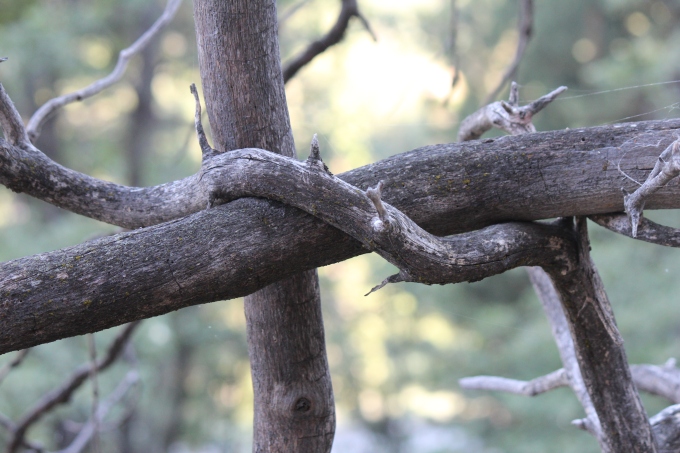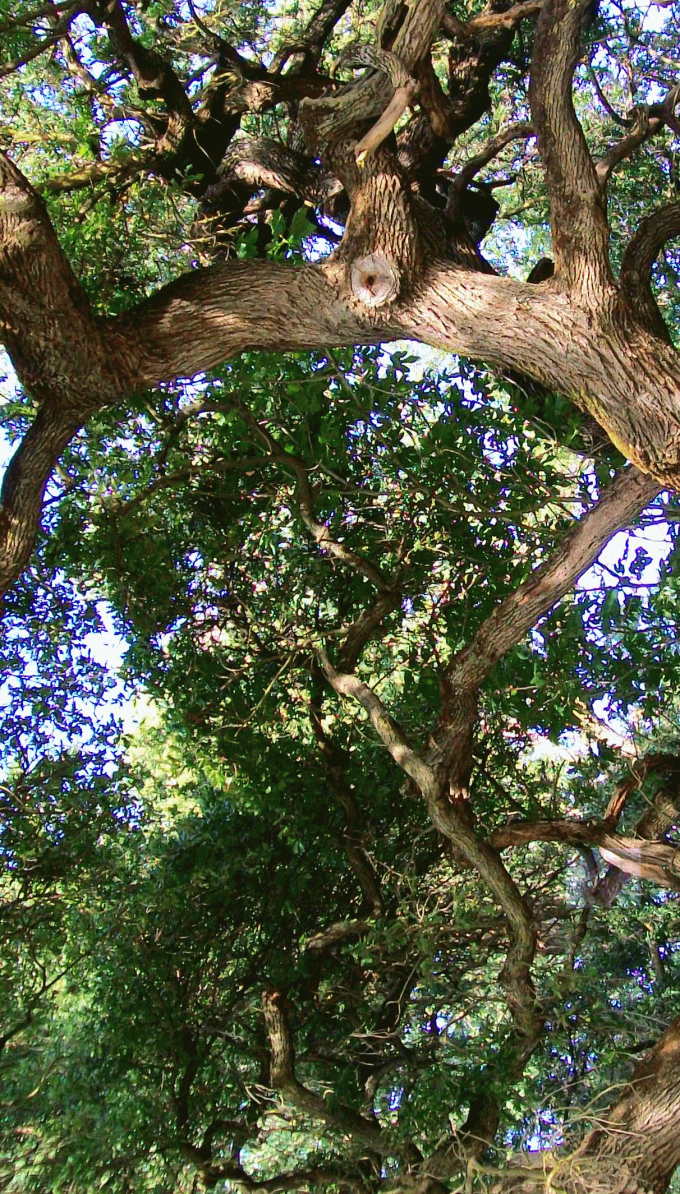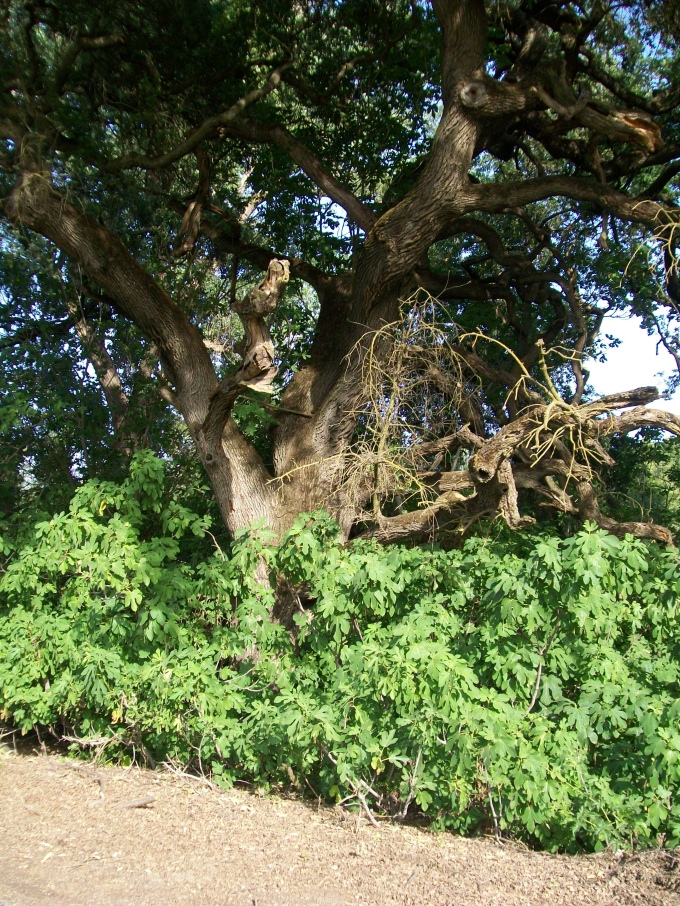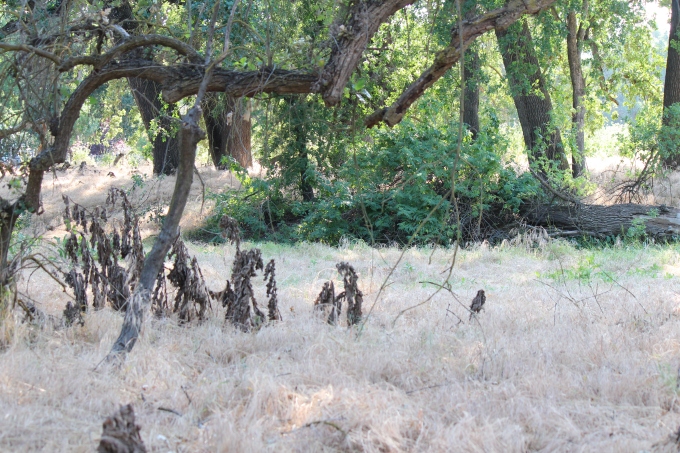See also: more tree photos
One area I frequented to observe bigfoot was quite near my home, so I got a good look at the place over the seasons and years. Another spot was visible from my backyard. Over time, I was able to see changes and patterns that maybe most people would not have been in a position to pick up. Another set of linked trees is at China Creek Park.

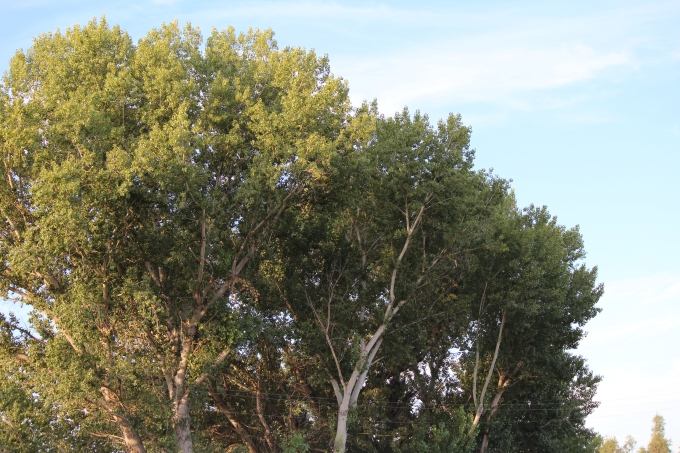
Let me note that I have worked for some time in an occupation that required me to look for tiny errors. I can tell the difference between a 6 font and a 7 font in a typeface, in the middle of a sentence, for example.
The climate here is semi-desert. Twelve inches of rain a year is average. Most trees are near water sources like rivers. except for the valley oaks which spring up in the foothills, where the water table is higher than in the valley floor. Geologically, it’s a different terrain from the Sierras or the Valley. The valley floor is a mile deep in sand and gravel, so the water table is far down.
Another matter that will aid understanding here is that, in this part of California we have the world’s tallest and biggest oak species. The valley oak may have a trunk diameter greater than ten feet. It can reach a height of over 150 feet. The branches have an irregular, spreading and arching appearance.
We also have planted non-native Canary Island Pines which have really long needles. If you see a photo of one of these, remember the needles can be over ten inches long. The local Fremont cottonwoods have leaves up to about three inches long.
Here we have a few native vines, but they are all small and thin. Yet up in the trees one can sometimes see what look like sturdy vines. I don’t know what those might be. Bigfoot construction zones seem to teem with many vines and small branches. The climate here doesn’t lend itself to jungle-density vine growth. I am not sure what is going on with the viny looking material, but intend to look some over next opportunity. I wonder if it could be mistletoe.

All that now said, I have noticed what I believe is bigfoot manipulation of trees and tree branches. In a previous post called Bigfoot Sign, I mentioned screens, hunting blinds, and ramps, but their use of trees may go way beyond such rudiments.
Adjacent trees can be worked into a large network of branches forming a grand dwelling.
They will take branches from one kind of tree and put them up into another sort of tree.
They will begin with young trees and over time shape them into whatever they like.
I believe sasquatches also will also take mature trees and bend and shape them, a little at a time.
Adjacent trees can be linked together using the two methods above. Walkways between them, larger screened in areas, lookout posts, and other useful structures can be made, and this gives greater security and strength than a single tree.
I think they may know a way to initiate branch growth where they like and so can form geometrically regular shapes and angles.
THE GROUP OF THREE PINES
My earlier photos of these seem to have gone the way of the dodo. I am on my third laptop. The most recent one was fried by the repairman. Most data was lost.
I guess I am just going to have to say that these started out as three separate trees and over time were pulled together toward the top.

Cottonwoods at canal, linked together:

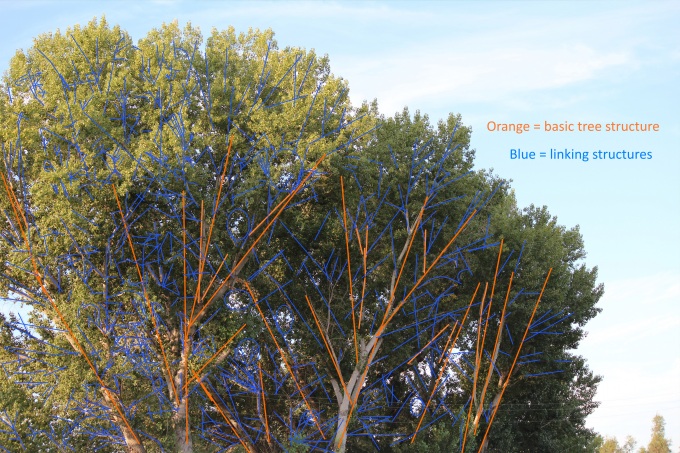
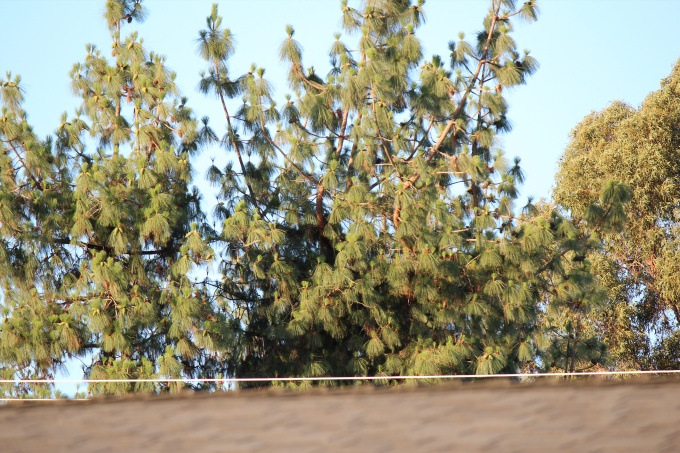
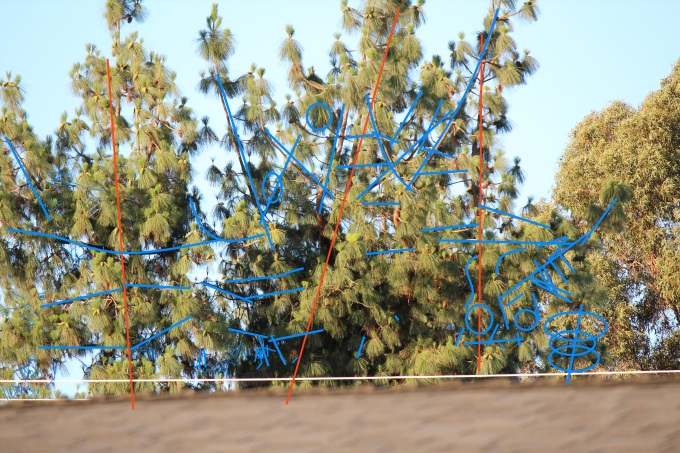
Notice where the bark is missing. This may be a spot where bark was worn away by use.
So then how are the trees connected?
There are several ways the trees are linked.
→ Branches can be looped around each other
→ Young branches can be trained to grow in the desired direction by gentle bending or by tying.
→ Vines or twisted branches can be extended between the trees and lashed around strong branches
→ Live branches can be interwoven into a lattice between the trees
→ Branches from other trees can be placed from one tree to the next and secured by being lashed or having smaller branches wrapped around it.
→ Larger branches can be grown from one tree and into the other over time, twisted around each other, interwoven.
→ Tree tops can be drawn together and secured by several of the above methods.
→ Large structures can be built between trees to make the individual trees stronger and form a place of refuge or a living space for a larger community.
How many generations of sasquatches would it take to form the elaborate twists and turns of the oak structures?
The height of larger trees is an advantage because lookouts can see anything heading the way of the community. Life in large deciduous trees, especially ones thus joined, is secure from flooding, is breezy in the heat of summer, safe from predators, and away from human foot traffic. Humans do not often look up to see if any sasquatches are hanging out upstairs and, anyway, the inhabitants are screened from view.
Ideally, such trees would be situated by a body of water to provide drinking water and serve as a swimming hole and outhouse. The sound of running water covers little noises like babies crying or conversation. Canals and rivers are routes of transportation or an escape route in case of danger.
The main drawback would be lightning and strong winds. Other than that, the living would seem easy.
In wintertime, evergreens would be an alternative. Frameworks for screens etc. are mostly dismantled, perhaps, in autumn.

